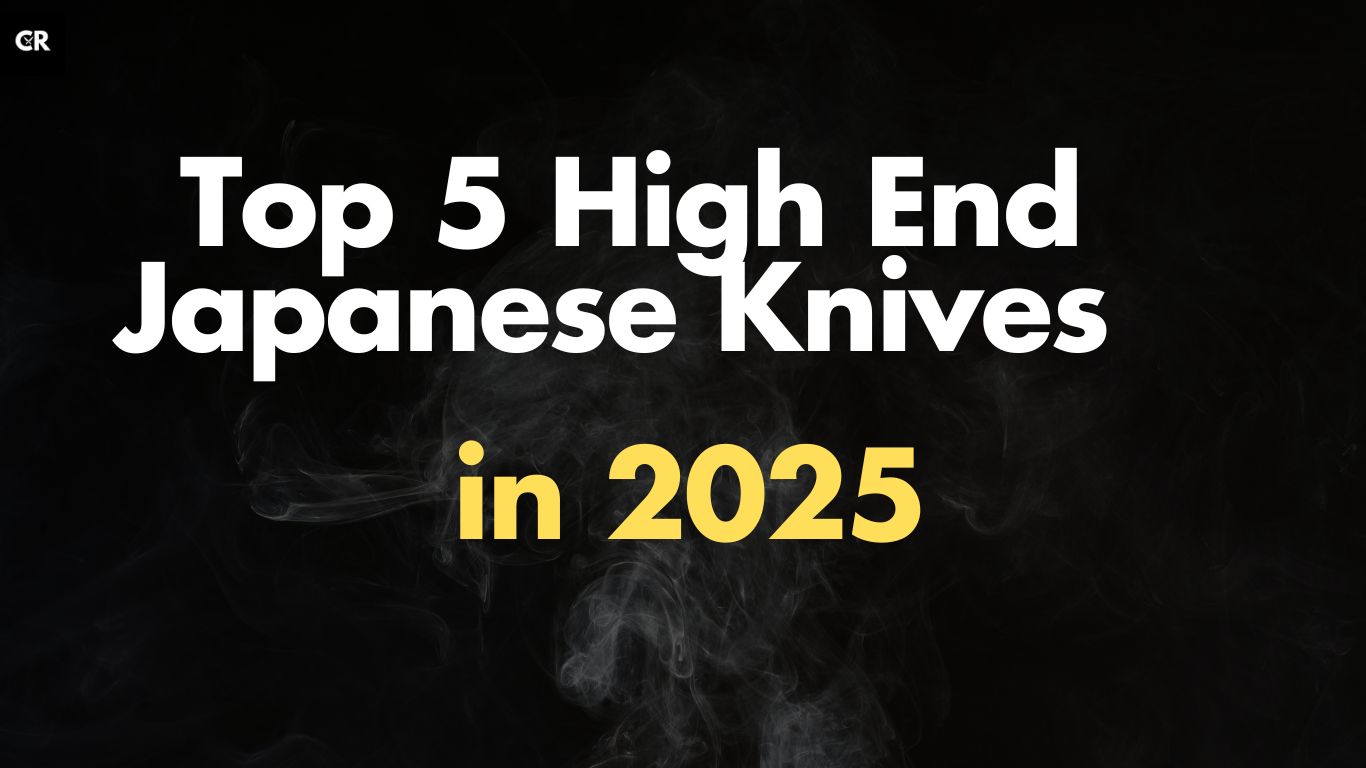Have you ever used a knife so sharp, so perfectly balanced, that it felt like an extension of your hand? The first time I held a high end Japanese knives, I was mesmerized. The way it sliced through vegetables like butter, the satisfying precision with each cut—it was a game-changer.
Moreover,Japanese knives aren’t just tools; they are masterpieces crafted with centuries of tradition. Unlike mass-produced Western knives, these blades are forged with meticulous care, using premium steel that stays razor-sharp for longer. Whether you’re delicately slicing sashimi or chopping through dense root vegetables, the right kitchen knife transforms cooking from a chore into an art.
But with so many options out there, how do you choose the best one? After testing some of the finest Japanese blades, I’ve handpicked 5 that truly stand out. Whether you’re a home cook looking to elevate your skills or a seasoned chef searching for the ultimate edge, this guide will help you find the perfect knife. Let’s dive in!
Our Top Pick
Best Overall:Shun Classic 8-Inch Chef’s Knife
Best Set:Miyabi 8-Inch Chef’s Knife
Best for Beginners:MAC MTH-80 Professional Series 8-Inch Chef’s Knife
Best Budget:Global G-2 8-Inch Chef’s Knife
Best for Slicing:Yoshihiro VG10 16 Layer Hammered Damascus Gyuto
Best Overall: Shun Classic 8-Inch Chef’s Knife Review
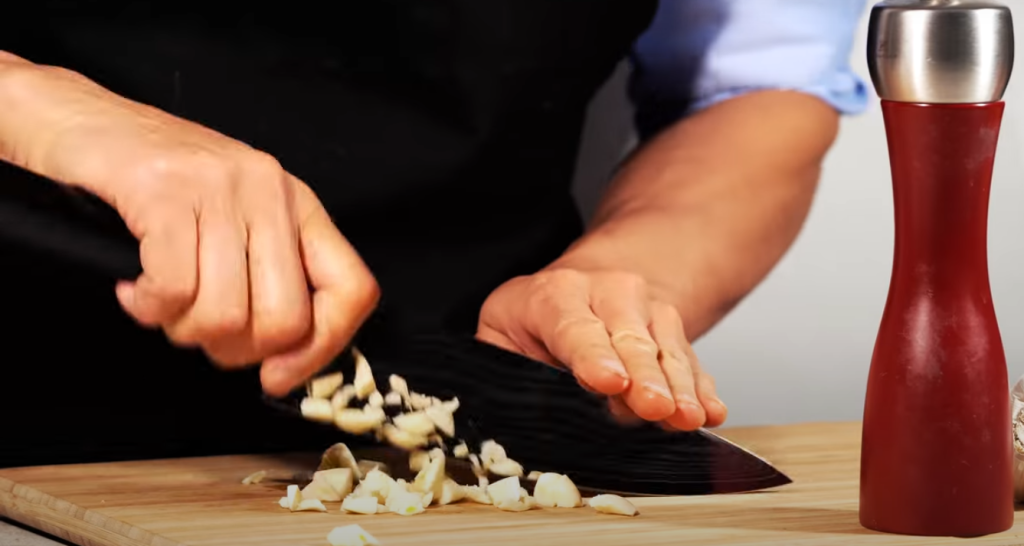
When I first held the Shun Classic 8-inch Japanese Chef’s Knife, I could immediately feel the craftsmanship. It’s lightweight but perfectly balanced, making slicing effortless. The VG-MAX steel core with 68 layers of Damascus cladding gives it an almost mirror-like finish, and the blade is ridiculously sharp—I could slice through tomatoes paper-thin with zero effort. The D-shaped Pakkawood handle fits comfortably in my hand, and I never felt like I was straining my grip.
Read How To Remove Rust From Knife | 4 Easy Ways to Remove Rust
That said, this knife demands respect. The ultra-sharp 16-degree edge means you need proper technique—if you’re careless, you’ll knick yourself fast. It also needs regular honing to stay in peak condition.
Fortunately I’ve found that after a few weeks of use, a quick pass over a honing rod brings the edge right back. For serious home cooks or professionals, this japanese steel knife is a joy to use. I’d give it a 9.5/10 for its stunning sharpness, balance, and premium feel. (Check Amazon Latest Price)
Best Set: Miyabi 8-Inch Chef’s Knife Review
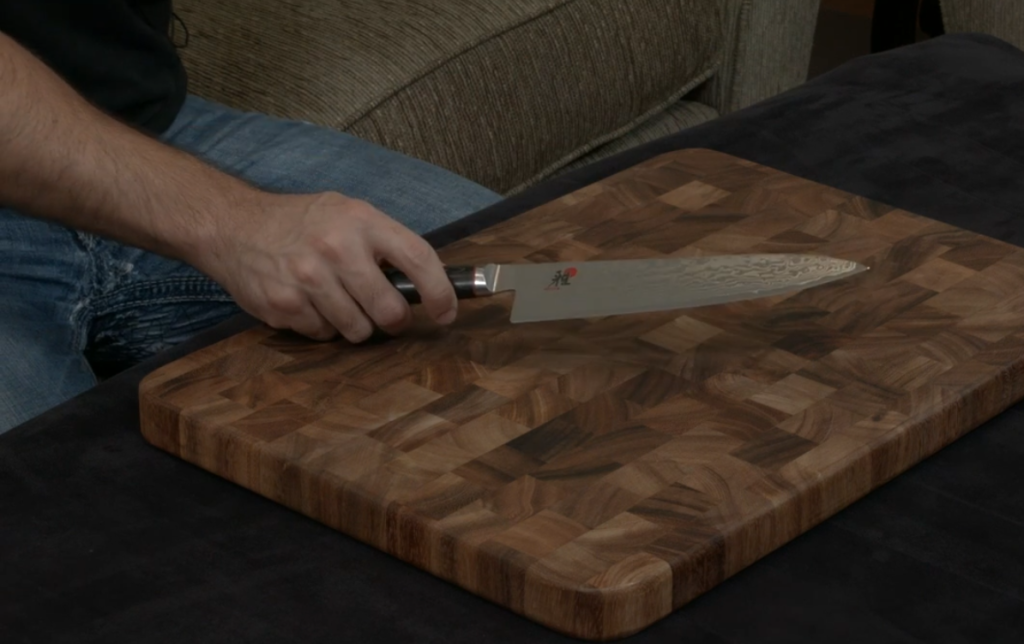
The Miyabi 8-inch Chef’s Knife is as much a piece of art as it is a kitchen tool. The first thing that caught my attention was the birchwood handle.it feels silky smooth but offers a firm grip.
I tested this Miyabi knife on everything from onions to thick cuts of beef, and the razor-sharp 9.5 to 12-degree edge sliced through with zero resistance. It’s lightweight and well-balanced, making long prep sessions easy on the wrists.
One thing to note is the blade’s extreme sharpness. It’s almost surgical, which is amazing for precision work but requires careful handling. If you’re used to heavier Western-style knives, the lightness might take some adjusting. That said, it holds an edge incredibly well.I barely needed to hone it after weeks of use. (Check Amazon Latest Price)
For precision, elegance, and top-tier craftsmanship, I’d rate it a 9/10.
Best for Beginners: MAC MTH-80 Professional Series 8-Inch Chef’s Knife Review
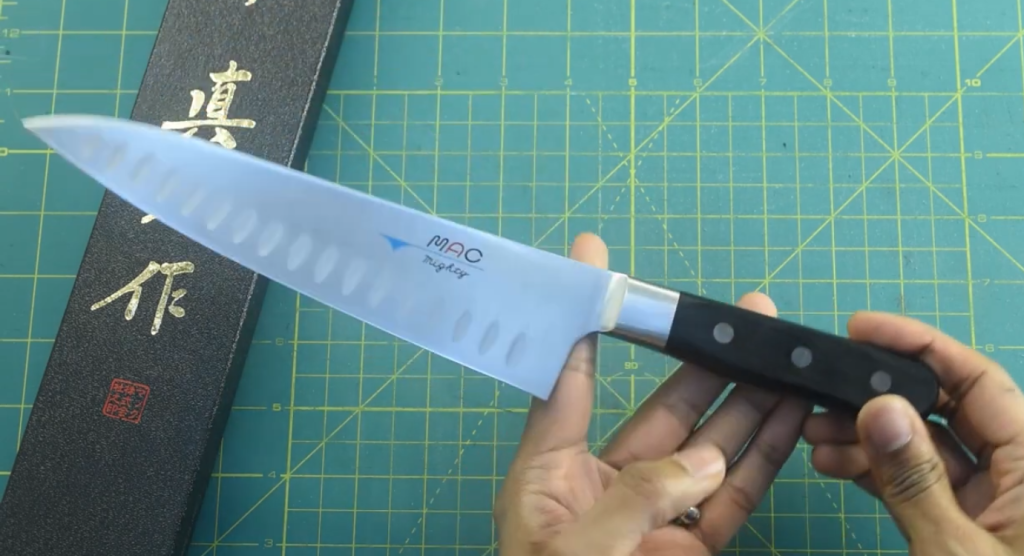
If you’re transitioning from a basic kitchen knife to something higher-end, the MAC MTH-80 is a great place to start. It’s razor-sharp but not intimidating, which is something I appreciated when I first used it. The 2.5mm thick blade provides enough durability while still being thin enough for precision cuts.
I especially loved the dimples on the blade, which really helped with starchy foods like potatoes and squash.it prevented sticking, making chopping smoother and faster.
The Pakkawood handle is ergonomic, but it doesn’t have the same premium feel as Shun or Miyabi knives. Also, while it holds an edge well, I did have to hone it a little more frequently than expected. Still, it’s lightweight, easy to control, and sharp enough for anything from herbs to meat.
For beginners looking to upgrade, I’d give it an 8.5/10. (Check Amazon Latest Price)
Best Budget: Global G-2 8-Inch Chef’s Knife Review
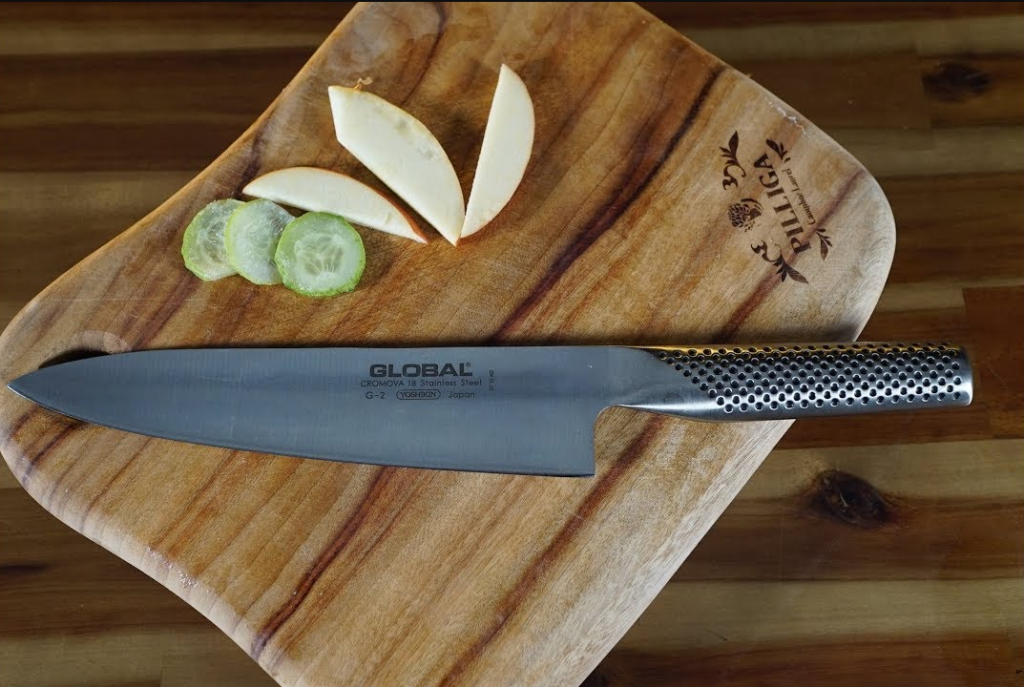
I’ll admit, I was skeptical about an all-metal knife, but the Global G-2 surprised me. It’s ultra-lightweight and makes slicing feel effortless. The stainless steel handle with a dimpled grip provides a secure hold, though it took me some time to get used to the feel compared to wooden handles.
The molybdenum/vanadium stainless steel blade holds its edge well, and I found it stayed sharp longer than I expected.
However, there are a couple of drawbacks. First, the handle can feel a bit slippery when wet, so it’s not the best for high-speed chopping. Also, because it’s so lightweight, I felt like I had to apply a bit more force when cutting dense ingredients like squash. But for the price, it’s a fantastic entry into Japanese knives. For affordability and sharpness, I’d rate it an 8/10.(Check Amazon Latest Price)
Best for Slicing: Yoshihiro VG10 16 Layer Hammered Damascus Gyuto Review
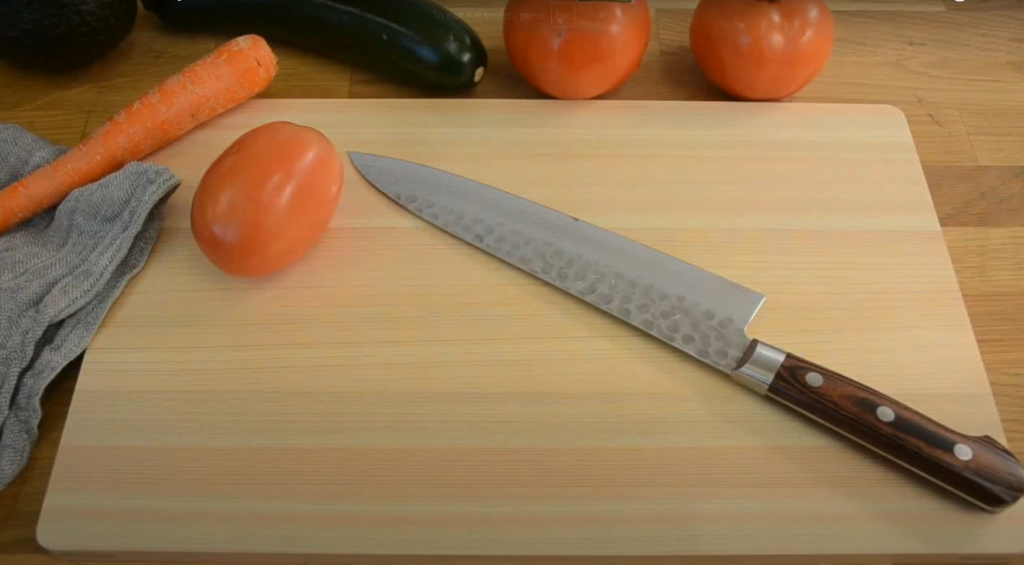
Yoshihiro Gyuto Knife is an absolute stunner. The 16-layer Damascus steel with a hammered finish isn’t just beautiful.it actually helps prevent food from sticking, which I really appreciated when slicing delicate ingredients like fish and cucumbers. The curved blade glides effortlessly through everything, and the mahogany handle has a great grip.
However, this steel knife requires more care than the others. It must be sharpened with a water whetstone, and it’s not dishwasher safe (though no high-end knife should be). If you like low-maintenance knives, this one might not be for you. But if you appreciate traditional Japanese craftsmanship, it’s a dream to use. For slicing precision and beauty, I’d rate it a 9/10.(Check Amazon Latest Price)
What we Like for in a High End Japanese Knives
When choosing a high-quality Japanese knife, these key factors make all the difference:
1. Razor-Sharp Blade – A thin, precise edge for effortless slicing and dicing.
2. Comfortable Handle – Choose between ergonomic Western-style or lightweight traditional Wa-handles for better control.
3. High-Quality Blade Material – Look for VG-10, VG-MAX, or Damascus steel for durability and long-lasting sharpness.
4. Blade Shape for Versatility – Gyuto knife for all-purpose use, Santoku knife for precision, Nakiri knife for veggies, and Yanagiba knife for sushi.
5. Easy Edge Maintenance – Japanese knives need regular honing and sharpening with a water whetstone to maintain their razor-sharp edge.
Pro Tip: A well-chosen knife feels like an extension of your hand, making cooking smoother and more enjoyable!
Recommendation:What would be the Right Choice for you?
Each of these japan knives has its strengths, and choosing the right one depends on your needs. If you want a top-tier all-purpose knife, the Shun Classic is hard to beat. If precision and aesthetics matter, the Miyabi knife is a great choice. Beginners will appreciate the MAC MTH-80, while the Global G-2 is a great budget-friendly choice. And if slicing is your top priority, the Yoshihiro Gyuto knife is a true workhorse.
Whichever kitchen knife you choose, taking care of it properly will make a huge difference. Regular honing, proper hand washing, and the right cutting surface will keep your knife in peak condition for years. Hope this helps in finding the perfect japanese kitchen knife for your kitchen!
FAQ
How do I maintain a high-end Japanese steel knife?
To maintain your Japanese knife, hone it regularly and sharpen it with a water whetstone. Always wash it by hand and avoid using a dishwasher for long-lasting sharpness
What type of handle is best for a Japanese knife?
Japanese knives have either Western-style handles or traditional Wa-handles. Western-style handles are ergonomic and good for control, while Wa-handles are lighter and ideal for a traditional feel.
What’s the difference between VG-10 and Damascus steel?
VG-10 is a high-quality stainless steel known for holding a sharp edge. Damascus steel is made from layers of metal, offering beauty and enhanced durability with excellent cutting performance.
Can I use a Japanese knife for all types of cooking?
Yes, Japanese knives like the Gyuto Knife are versatile enough for all-purpose use, while knives like the Santoku knife and Nakiri knife specialize in tasks like precision cuts and chopping vegetables.
How do I prevent my Japanese knife from rusting?
To prevent rust, always dry your knife after use, and store it in a dry place. Avoid leaving it in wet conditions or in a dishwasher.
Why trust us
Nahid, our skilled kitchen appliance expert, brings deep industry knowledge to our content. With a focus on the latest technologies, trends, and performance, Nahid ensures you get accurate and reliable insights. His thorough evaluations and practical advice help you select, use, and maintain top-quality appliances for optimal kitchen efficiency. Trust us to guide you with expertise and confidence.
